Looking for the best silicone adhesive for your next project? This guide will explore the top silicone glues that offer superior bonding strength and flexibility. Whether you’re tackling home repairs or professional projects, these adhesives are designed to meet various needs.
With years of industry experience, we know how the right adhesive can make all the difference in achieving long-lasting, secure bonds for a wide range of materials.
From quick fixes to durable, high-performance solutions, we’ll highlight the top picks that ensure reliable results every time.
Ready to choose the perfect adhesive? Let’s dive in.
What is Silicone Adhesive and Why Should You Choose It?
Silicone glue is a versatile and highly effective bonding solution used for a wide range of materials, including glass, metal, plastic, and ceramics. Unlike many other adhesives, silicone forms a strong, waterproof, and flexible bond that can withstand extreme temperatures and harsh environmental conditions. Whether you’re sealing a bathroom, fixing an aquarium, or repairing car parts, silicone adhesive provides a reliable, long-lasting solution.
Here’s why it’s the go-to choice for so many:
- Durability: Silicone adhesive creates long-lasting bonds that can withstand wear and tear. It works great in high-stress environments, ensuring a reliable connection over time.
- Waterproof: Silicone adhesive forms a watertight seal. This feature makes it ideal for outdoor and underwater applications, like sealing pipes or repairing aquariums.
- Temperature Resistance: Silicone glues withstand extreme heat and cold. They perform well in both high and low temperatures, making them perfect for automotive, industrial, and home repair tasks.
- Flexibility: Once cured, silicone remains flexible. This ensures that the bond stays intact, even when materials expand or contract due to temperature changes.
Let’s explore these benefits further and see why silicone adhesive is a must-have for your next project.
Types of Silicone Glues: Choosing the Right One for Your Project

Silicone adhesives come in different types, each designed for specific needs and applications. Whether you’re sealing gaps, bonding materials, or repairing a surface, selecting the right type ensures optimal performance and durability.
Here’s a breakdown of the common types of silicone adhesives:
RTV Silicone Adhesive (Room Temperature Vulcanizing)
RTV silicone adhesives cure at room temperature when exposed to moisture in the air. They’re ideal for general-purpose applications, including sealing, bonding, and waterproofing. You’ll often find RTV silicone used in automotive, construction, and electronic device repairs.
- Key Features: Quick curing, flexible, and waterproof.
- Best For: Sealing gaps, sealing windows, fixing electronics, or plumbing.
High-Temperature Silicone Adhesive
High-temperature silicone adhesives can withstand extreme heat, making them perfect for automotive, industrial, and high-heat environments. They remain stable and flexible even at temperatures reaching up to 600°F (315°C), ensuring a suitable bond in challenging conditions.
- Key Features: Heat-resistant, durable, and flexible.
- Best For: Automotive parts, exhaust systems, and industrial machinery.
Silicone Sealant
While often mistaken for an adhesive, silicone sealants also have bonding properties. These products are mainly used to seal joints, caulking cracks, and gaps to prevent water and air leaks. They’re particularly useful for bathrooms, kitchens, and windows.
- Key Features: Waterproof, airtight, and mildew-resistant.
- Best For: Sealing windows, bathtubs, and countertops.
Silicone Adhesive Gel
Silicone sealants have a thicker, gel-like consistency. They provide better control when applying sealant to vertical or overhead surfaces and are often used in precise applications like electronics or crafts.
- Key Features: Thicker consistency, precise application, and moisture resistance.
- Best For: Electronics, delicate materials, and crafts.
Structural Silicone Sealant
For heavy-duty bonding, structural silicone adhesives are designed to handle high-stress applications. These adhesives are engineered for high load-bearing capacities and are commonly used in construction, glass installation, and the automotive industries.
- Key Features: Strong bonding, load-bearing capacity, and long-lasting.
- Best For: Glass installations, structural applications, and large construction projects.
Top Silicone Adhesives on the Market: Our Picks for 2025 – h2
Now that we’ve looked at what silicone sealant can do, let’s check out some top products you might want to try. These adhesives are easy to use, reliable, and strong.
1. Gorilla 100% Silicone Sealant
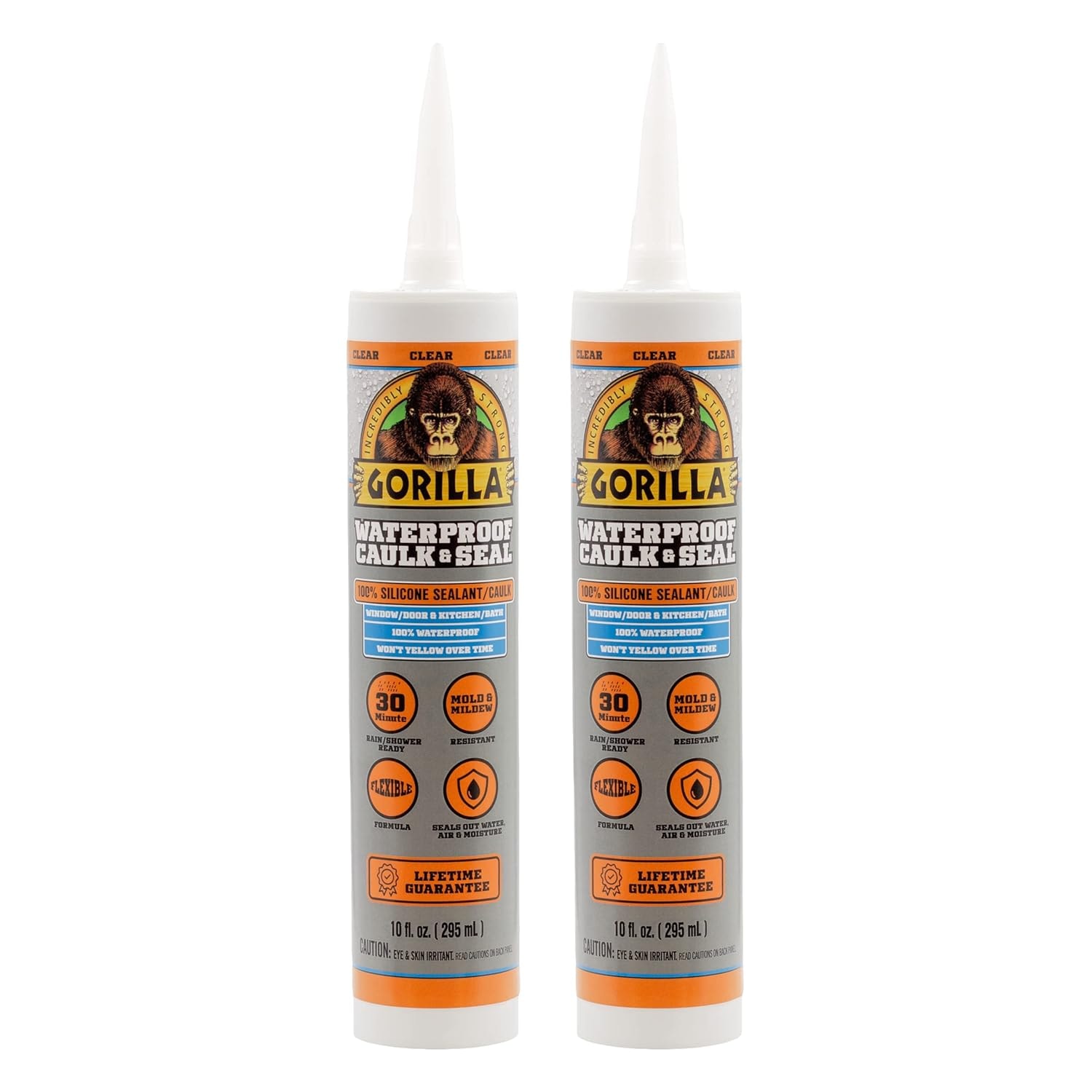
Best for: General Home Repairs
If you need a strong, waterproof bond for quick home fixes, Gorilla’s 100% Silicone Sealant could be a great choice.
It works well for sealing windows, doors, sinks, and tubs – both indoors and outside.
Why You Might Like It?
- 100% waterproof
- Resists mold, mildew, and UV damage
- Stays clear without yellowing over time
It’s a handy option when you want your repairs to stay neat and professional-looking.
2. Loctite Clear Silicone Waterproof Sealant

Best for: Waterproof Projects
When you’re working around plumbing, outdoor fixtures, or anything that deals with water, Loctite’s clear silicone might be the way to go.
It sticks to lots of surfaces and keeps water out, even under tough conditions.
What Makes It Stand Out?
- Clear finish
- Waterproof and flexible
- Holds strong in hot and cold weather
You won’t have to worry about it cracking or losing grip when temperatures swing.
3. Permatex Clear RTV Silicone Adhesive Sealant
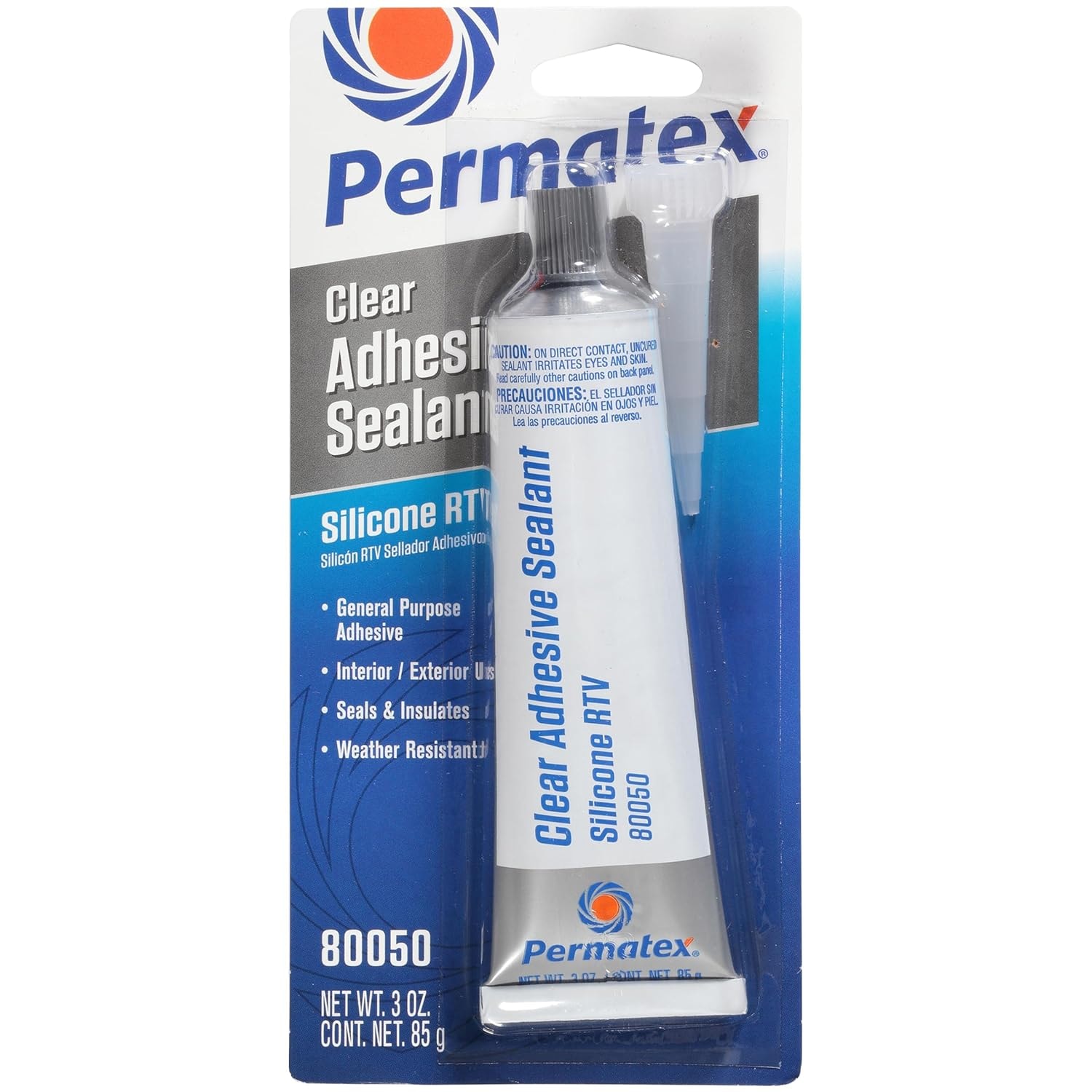
Best for: Automotive Repairs
If you’re fixing up a car or motorcycle, Permatex Clear RTV Silicone could be a smart pick. It’s designed for high-heat areas like engines and various gaskets.
Highlights:
- Stands up to high temperatures
- Bonds metal, glass, and plastic
- Cures quickly for faster repairs
You’ll appreciate how it holds firm where other adhesives might fail.
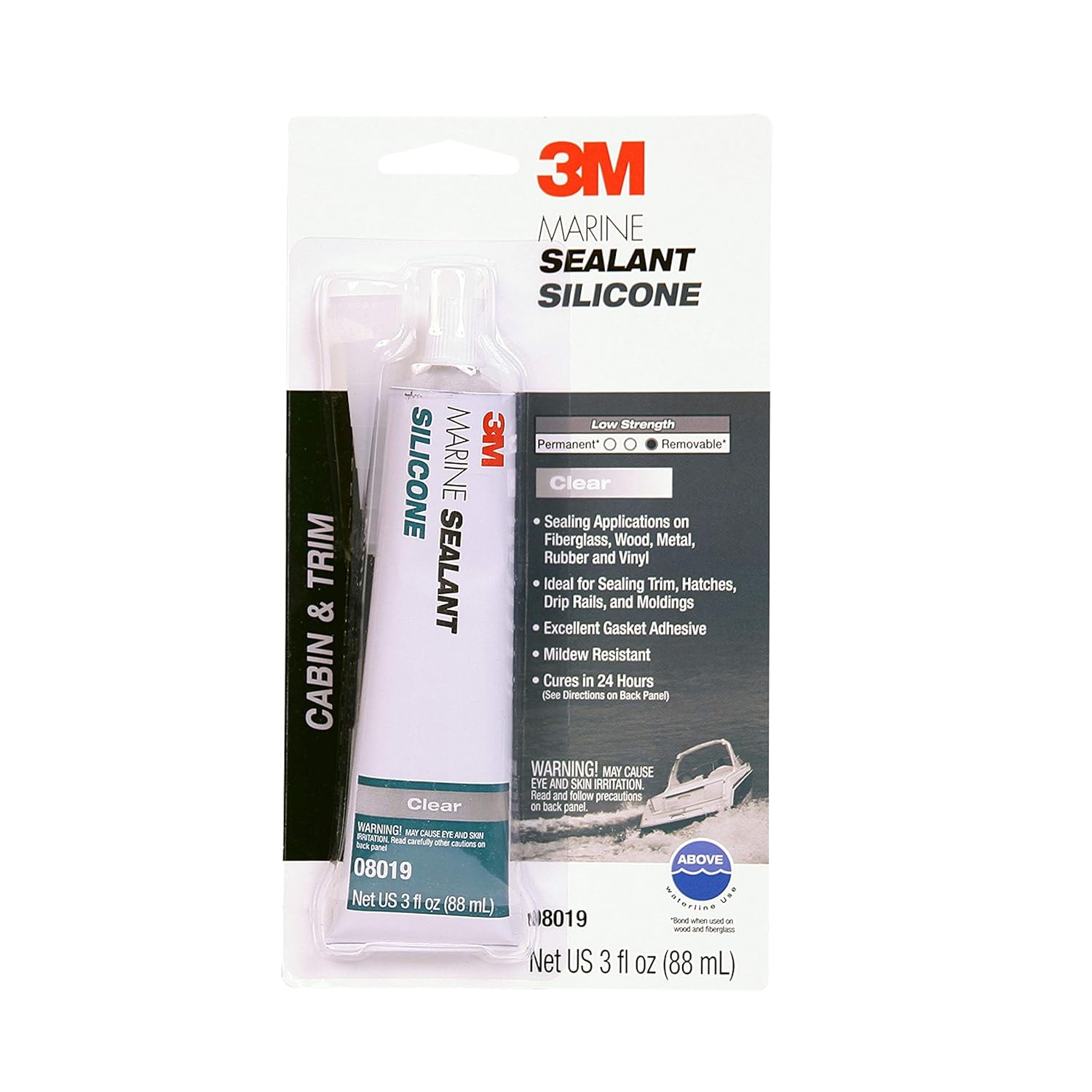
Best for: Marine Projects
When you’re dealing with boats, docks, or anything near saltwater, 3M’s Marine Adhesive Sealant could be your best friend. It’s built tough for harsh, wet environments.
Why It’s a Solid Pick?
- Waterproof and saltwater-resistant
- Strong and flexible bond
- Great for boat hulls and marine hardware
This one might fit the bill if you need a foil seal that stays strong even after years on the water.
| Quick Tip:Before choosing, think about where and how you’ll use the adhesive. A waterproof sealant might work best for showers, while a weather-resistant one could be essential for car repairs. You can find all types of adhesives here to match your needs. |
How to Apply Silicone Adhesive? Step-by-Step Guide?
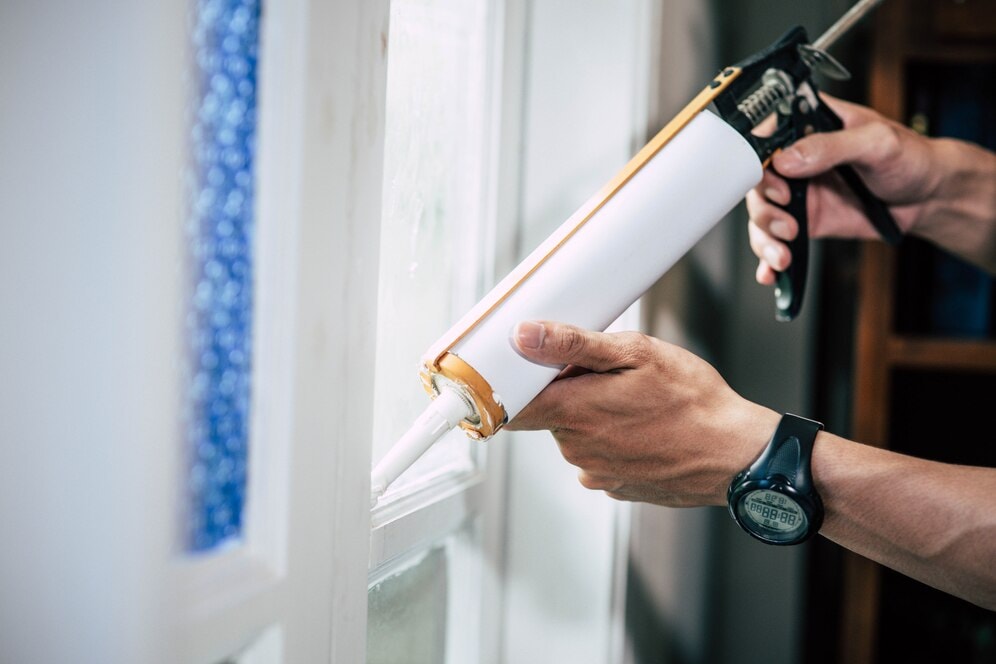
Applying silicone sealant correctly ensures a strong, lasting bond. Whether you’re sealing, bonding, or repairing, following these steps will help you get the best results.
Step 1: Prepare the Surface
The first step is always preparation. Clean the surfaces you’re bonding to ensure a strong adhesive bond. Any dust, dirt, or oils can weaken the connection.
- Tip: Use a mild cleaner or rubbing alcohol and a lint-free cloth to wipe down the area. Allow the silicone sealant to dry completely before proceeding.
Step 2: Cut the Tip of the Nozzle
Silicone sealant typically comes in a tube with a nozzle. You’ll need to cut the tip at a 45-degree angle to control the flow and size of the bead. The size of the cut will depend on the amount of adhesive you need to apply.
- Tip: Start with a small cut and make it larger if necessary. You can always trim more if the bead is too small.
Step 3: Apply the Silicone Adhesive
Squeeze the tube gently to apply sealant in an even, continuous desired bead size. Move slowly and steadily to ensure the adhesive is applied uniformly.
- Tip: Apply enough silicone sealant to cover the entire bonding area, but avoid over-applying as excess silicone can cause messes and affect the bond’s strength.
Step 4: Press the Materials Together
Once the adhesive is in place, press the surfaces together. Apply even pressure to ensure an excellent resistance. Make sure the materials stay in place while the sealant sets.
- Tip: Use clamps or tape to hold the materials in position if needed. This ensures they stay aligned while the adhesive cures.
Step 5: Smooth the Bead (Optional)
If you want a clean, neat finish, smooth the desired bead size with a damp finger or a tool. This also helps to ensure the silicone forms a solid bond along the edges.
- Tip: Keep a damp cloth handy to wipe away any excess silicone immediately to avoid stains.
Step 6: Let It Cure
Silicone sealant requires time to fully cure. The curing time can vary, but it usually takes 24 hours for full adhesion. Avoid disturbing the bond during this time.
- Tip: Check the manufacturer’s instructions for specific curing times. In some cases, the sealant may form a skin in 20-30 minutes, but it still needs additional time to fully cure inside.
Step 7: Clean Up
After the sealant has cured, use a utility knife or scraper to carefully remove any excess silicone. Be cautious not to damage the surfaces you’re working with.
- Tip: If you need to remove uncured silicone from surfaces, use rubbing alcohol or a silicone remover product.
Following these steps ensures your silicone sealant bond will be strong, durable, and clean. Keep these steps in mind, and you’ll have a smooth, successful application every time.
| Pro tip: You can also refer to this video guide for a quick look at the application process:<iframe width=”853″ height=”480″ src=”https://www.youtube.com/embed/VAzmI_4z61w” title=”How to Apply Silicone Sealant Like a Pro – Easy and Quick DIY Guide” frameborder=”0″ allow=”accelerometer; autoplay; clipboard-write; encrypted-media; gyroscope; picture-in-picture; web-share” referrerpolicy=”strict-origin-when-cross-origin” allowfullscreen></iframe> |
Common Applications of Silicone Adhesive
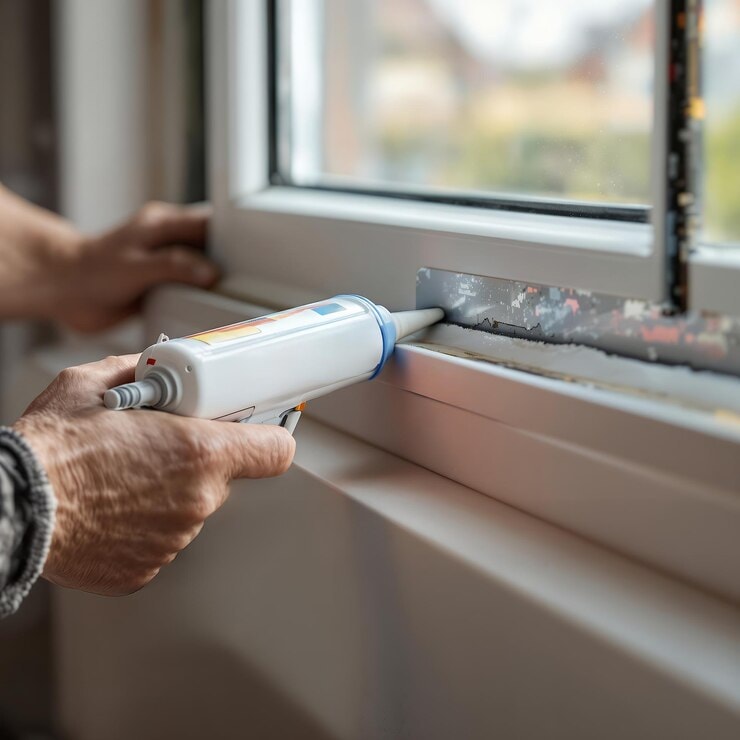
Silicone adhesive is a highly versatile product that has a wide range of uses. Let’s look at some of its most common applications and why it’s trusted by so many professionals and homeowners alike.
1. Automotive Repairs
If you’re repairing or maintaining a car, silicone adhesive is an essential tool. It’s used to seal windshields, bond parts, and prevent leaks. The adhesive stands up to the toughest conditions like extreme heat, rain, or snow. Its flexibility ensures the bond remains strong even when the car’s materials expand and contract with temperature changes.
2. Bathroom and Kitchen Sealing
In the bathroom or kitchen, silicone sealant excels at sealing. You can use it to seal around sinks, bathtubs, countertops, and showers. Its waterproof nature makes it ideal for wet environments. Additionally, silicone helps prevent the growth of mold and mildew, keeping your spaces clean and safe.
3. Aquarium Construction and Repairs
Aquarium enthusiasts trust silicone adhesive for constructing and repairing tanks. It bonds glass panels securely, forming a strong and watertight seal. It won’t leak, even when exposed to constant water pressure.
4. Electronics and Electrical Applications
Silicone adhesive is commonly used in electrical and electronic devices. It provides a protective inner foil seal that keeps out moisture and dust, which helps extend the lifespan of your gadgets. Just know that silicone adhesive ensures your electronics perform at their best, even in harsh environments.
5. Glass and Mirror Adhesion
Hanging mirrors or installing glass can be tricky without the right adhesive. Silicone sealant is perfect for these tasks. Its clear finish means you won’t see any residue. It also provides a durable bond that keeps your glass and mirrors securely in place.
6. Industrial and Construction Use
In multiple industries and construction settings, silicone adhesive is indispensable. It bonds materials that face extreme conditions, from heavy machinery parts to sealing construction joints. Whether you need flexibility or resistance, this adhesive provides the strength you need to get the job done.
7. Crafting and DIY Projects
For DIY enthusiasts and crafters, silicone adhesive is an essential tool. It’s perfect for gluing together various materials, such as wood, metal, plastic, and ceramics. Silicone sealants offer a durable bond, guaranteeing the longevity of your custom furniture or creative endeavors.
How to Choose the Best Silicone Adhesive for Your Needs?
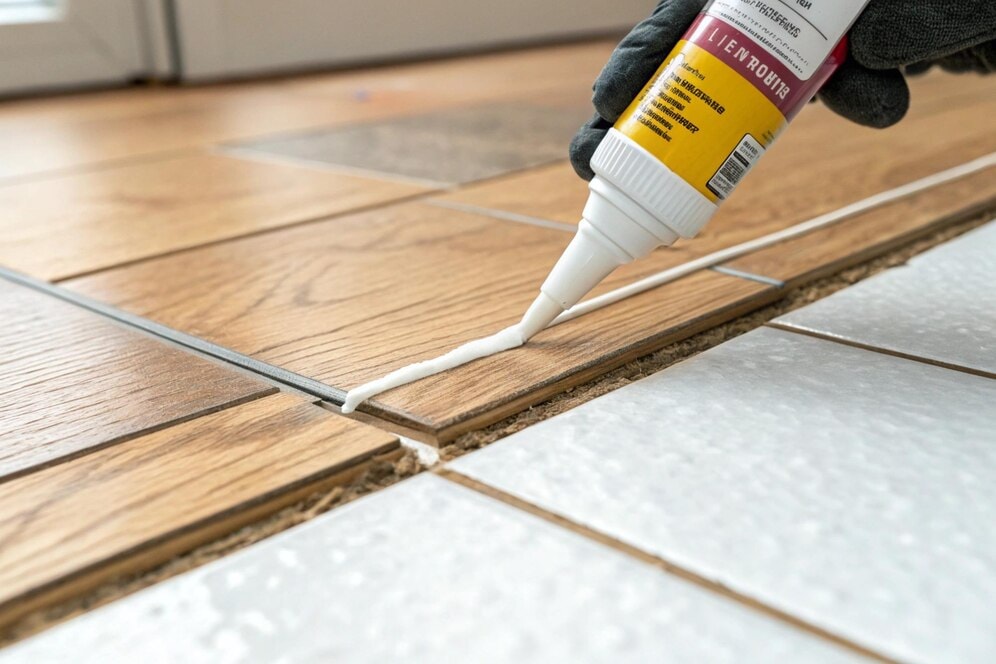
Choosing the right silicone adhesive can feel tricky. But if you know what to look for, it gets much easier.
First, think about where you’ll use it.
If you’re sealing a bathroom, kitchen, or aquarium, a waterproof sealant is a smart choice.
For outdoor repairs or automotive parts, you’ll want a silicone that can handle extreme temperatures and weather.
Next, check how flexible the adhesive stays after it cures.
If the materials you’re bonding will expand, contract, or move around, a flexible silicone will keep the bond strong without cracking.
You should also consider the curing time.
If you need a quick fix, go for a fast-curing silicone. But if you have time and want maximum strength, a slower-curing option might be better.
Another thing to think about is the adhesive’s appearance.
Clear silicones work best when you want a neat, invisible bond. Colored silicones are great if you want the adhesive to match the materials you’re joining.
Lastly, don’t forget safety.
If you’re using it indoors, especially around food or water, check that the silicone is labeled as safe for those environments.
Taking a little extra time to match the sealant to your project can save you from a lot of frustration down the road.
Conclusion: Time to Put It to Work
Now that you know the power of silicone sealants, it’s time to put that knowledge to use. Think about your next project, and pick the adhesive that fits best.
If you’re curious about more handy tools, check out our guide on the top 5 best adhesives for automotive electronics to keep your toolkit strong.
The right choice of adhesive can make all the difference. For that, check out more of our expert guides to ensure you’re selecting and using sealants effectively, or contact us for tailored advice on your specific needs. We’re here to help you get the best results!Looking for the best silicone adhesive for your next project? This guide will explore the top silicone glues that offer superior bonding strength and flexibility. Whether you’re tackling home repairs or professional projects, these adhesives are designed to meet various needs.
With years of industry experience, we know how the right adhesive can make all the difference in achieving long-lasting, secure bonds for a wide range of materials.
From quick fixes to durable, high-performance solutions, we’ll highlight the top picks that ensure reliable results every time.
Ready to choose the perfect adhesive? Let’s dive in.
What is Silicone Adhesive and Why Should You Choose It?
Silicone glue is a versatile and highly effective bonding solution used for a wide range of materials, including glass, metal, plastic, and ceramics. Unlike many other adhesives, silicone forms a strong, waterproof, and flexible bond that can withstand extreme temperatures and harsh environmental conditions. Whether you’re sealing a bathroom, fixing an aquarium, or repairing car parts, silicone adhesive provides a reliable, long-lasting solution.
Here’s why it’s the go-to choice for so many:
- Durability: Silicone adhesive creates long-lasting bonds that can withstand wear and tear. It works great in high-stress environments, ensuring a reliable connection over time.
- Waterproof: Silicone adhesive forms a watertight seal. This feature makes it ideal for outdoor and underwater applications, like sealing pipes or repairing aquariums.
- Temperature Resistance: Silicone glues withstand extreme heat and cold. They perform well in both high and low temperatures, making them perfect for automotive, industrial, and home repair tasks.
- Flexibility: Once cured, silicone remains flexible. This ensures that the bond stays intact, even when materials expand or contract due to temperature changes.
Let’s explore these benefits further and see why silicone adhesive is a must-have for your next project.
Types of Silicone Glues: Choosing the Right One for Your Project

Silicone adhesives come in different types, each designed for specific needs and applications. Whether you’re sealing gaps, bonding materials, or repairing a surface, selecting the right type ensures optimal performance and durability.
Here’s a breakdown of the common types of silicone adhesives:
RTV Silicone Adhesive (Room Temperature Vulcanizing)
RTV silicone adhesives cure at room temperature when exposed to moisture in the air. They’re ideal for general-purpose applications, including sealing, bonding, and waterproofing. You’ll often find RTV silicone used in automotive, construction, and electronic device repairs.
- Key Features: Quick curing, flexible, and waterproof.
- Best For: Sealing gaps, sealing windows, fixing electronics, or plumbing.
High-Temperature Silicone Adhesive
High-temperature silicone adhesives can withstand extreme heat, making them perfect for automotive, industrial, and high-heat environments. They remain stable and flexible even at temperatures reaching up to 600°F (315°C), ensuring a suitable bond in challenging conditions.
- Key Features: Heat-resistant, durable, and flexible.
- Best For: Automotive parts, exhaust systems, and industrial machinery.
Silicone Sealant
While often mistaken for an adhesive, silicone sealants also have bonding properties. These products are mainly used to seal joints, caulking cracks, and gaps to prevent water and air leaks. They’re particularly useful for bathrooms, kitchens, and windows.
- Key Features: Waterproof, airtight, and mildew-resistant.
- Best For: Sealing windows, bathtubs, and countertops.
Silicone Adhesive Gel
Silicone sealants have a thicker, gel-like consistency. They provide better control when applying sealant to vertical or overhead surfaces and are often used in precise applications like electronics or crafts.
- Key Features: Thicker consistency, precise application, and moisture resistance.
- Best For: Electronics, delicate materials, and crafts.
Structural Silicone Sealant
For heavy-duty bonding, structural silicone adhesives are designed to handle high-stress applications. These adhesives are engineered for high load-bearing capacities and are commonly used in construction, glass installation, and the automotive industries.
- Key Features: Strong bonding, load-bearing capacity, and long-lasting.
- Best For: Glass installations, structural applications, and large construction projects.
Top Silicone Adhesives on the Market: Our Picks for 2025 – h2
Now that we’ve looked at what silicone sealant can do, let’s check out some top products you might want to try. These adhesives are easy to use, reliable, and strong.
1. Gorilla 100% Silicone Sealant

Best for: General Home Repairs
If you need a strong, waterproof bond for quick home fixes, Gorilla’s 100% Silicone Sealant could be a great choice.
It works well for sealing windows, doors, sinks, and tubs – both indoors and outside.
Why You Might Like It?
- 100% waterproof
- Resists mold, mildew, and UV damage
- Stays clear without yellowing over time
It’s a handy option when you want your repairs to stay neat and professional-looking.
2. Loctite Clear Silicone Waterproof Sealant

Best for: Waterproof Projects
When you’re working around plumbing, outdoor fixtures, or anything that deals with water, Loctite’s clear silicone might be the way to go.
It sticks to lots of surfaces and keeps water out, even under tough conditions.
What Makes It Stand Out?
- Clear finish
- Waterproof and flexible
- Holds strong in hot and cold weather
You won’t have to worry about it cracking or losing grip when temperatures swing.
3. Permatex Clear RTV Silicone Adhesive Sealant

Best for: Automotive Repairs
If you’re fixing up a car or motorcycle, Permatex Clear RTV Silicone could be a smart pick. It’s designed for high-heat areas like engines and various gaskets.
Highlights:
- Stands up to high temperatures
- Bonds metal, glass, and plastic
- Cures quickly for faster repairs
You’ll appreciate how it holds firm where other adhesives might fail.

Best for: Marine Projects
When you’re dealing with boats, docks, or anything near saltwater, 3M’s Marine Adhesive Sealant could be your best friend. It’s built tough for harsh, wet environments.
Why It’s a Solid Pick?
- Waterproof and saltwater-resistant
- Strong and flexible bond
- Great for boat hulls and marine hardware
This one might fit the bill if you need a foil seal that stays strong even after years on the water.
| Quick Tip:Before choosing, think about where and how you’ll use the adhesive. A waterproof sealant might work best for showers, while a weather-resistant one could be essential for car repairs. You can find all types of adhesives here to match your needs. |
How to Apply Silicone Adhesive? Step-by-Step Guide?

Applying silicone sealant correctly ensures a strong, lasting bond. Whether you’re sealing, bonding, or repairing, following these steps will help you get the best results.
Step 1: Prepare the Surface
The first step is always preparation. Clean the surfaces you’re bonding to ensure a strong adhesive bond. Any dust, dirt, or oils can weaken the connection.
- Tip: Use a mild cleaner or rubbing alcohol and a lint-free cloth to wipe down the area. Allow the silicone sealant to dry completely before proceeding.
Step 2: Cut the Tip of the Nozzle
Silicone sealant typically comes in a tube with a nozzle. You’ll need to cut the tip at a 45-degree angle to control the flow and size of the bead. The size of the cut will depend on the amount of adhesive you need to apply.
- Tip: Start with a small cut and make it larger if necessary. You can always trim more if the bead is too small.
Step 3: Apply the Silicone Adhesive
Squeeze the tube gently to apply sealant in an even, continuous desired bead size. Move slowly and steadily to ensure the adhesive is applied uniformly.
- Tip: Apply enough silicone sealant to cover the entire bonding area, but avoid over-applying as excess silicone can cause messes and affect the bond’s strength.
Step 4: Press the Materials Together
Once the adhesive is in place, press the surfaces together. Apply even pressure to ensure an excellent resistance. Make sure the materials stay in place while the sealant sets.
- Tip: Use clamps or tape to hold the materials in position if needed. This ensures they stay aligned while the adhesive cures.
Step 5: Smooth the Bead (Optional)
If you want a clean, neat finish, smooth the desired bead size with a damp finger or a tool. This also helps to ensure the silicone forms a solid bond along the edges.
- Tip: Keep a damp cloth handy to wipe away any excess silicone immediately to avoid stains.
Step 6: Let It Cure
Silicone sealant requires time to fully cure. The curing time can vary, but it usually takes 24 hours for full adhesion. Avoid disturbing the bond during this time.
- Tip: Check the manufacturer’s instructions for specific curing times. In some cases, the sealant may form a skin in 20-30 minutes, but it still needs additional time to fully cure inside.
Step 7: Clean Up
After the sealant has cured, use a utility knife or scraper to carefully remove any excess silicone. Be cautious not to damage the surfaces you’re working with.
- Tip: If you need to remove uncured silicone from surfaces, use rubbing alcohol or a silicone remover product.
Following these steps ensures your silicone sealant bond will be strong, durable, and clean. Keep these steps in mind, and you’ll have a smooth, successful application every time.
| Pro tip: You can also refer to this video guide for a quick look at the application process:<iframe width=”853″ height=”480″ src=”https://www.youtube.com/embed/VAzmI_4z61w” title=”How to Apply Silicone Sealant Like a Pro – Easy and Quick DIY Guide” frameborder=”0″ allow=”accelerometer; autoplay; clipboard-write; encrypted-media; gyroscope; picture-in-picture; web-share” referrerpolicy=”strict-origin-when-cross-origin” allowfullscreen></iframe> |
Common Applications of Silicone Adhesive

Silicone adhesive is a highly versatile product that has a wide range of uses. Let’s look at some of its most common applications and why it’s trusted by so many professionals and homeowners alike.
1. Automotive Repairs
If you’re repairing or maintaining a car, silicone adhesive is an essential tool. It’s used to seal windshields, bond parts, and prevent leaks. The adhesive stands up to the toughest conditions like extreme heat, rain, or snow. Its flexibility ensures the bond remains strong even when the car’s materials expand and contract with temperature changes.
2. Bathroom and Kitchen Sealing
In the bathroom or kitchen, silicone sealant excels at sealing. You can use it to seal around sinks, bathtubs, countertops, and showers. Its waterproof nature makes it ideal for wet environments. Additionally, silicone helps prevent the growth of mold and mildew, keeping your spaces clean and safe.
3. Aquarium Construction and Repairs
Aquarium enthusiasts trust silicone adhesive for constructing and repairing tanks. It bonds glass panels securely, forming a strong and watertight seal. It won’t leak, even when exposed to constant water pressure.
4. Electronics and Electrical Applications
Silicone adhesive is commonly used in electrical and electronic devices. It provides a protective inner foil seal that keeps out moisture and dust, which helps extend the lifespan of your gadgets. Just know that silicone adhesive ensures your electronics perform at their best, even in harsh environments.
5. Glass and Mirror Adhesion
Hanging mirrors or installing glass can be tricky without the right adhesive. Silicone sealant is perfect for these tasks. Its clear finish means you won’t see any residue. It also provides a durable bond that keeps your glass and mirrors securely in place.
6. Industrial and Construction Use
In multiple industries and construction settings, silicone adhesive is indispensable. It bonds materials that face extreme conditions, from heavy machinery parts to sealing construction joints. Whether you need flexibility or resistance, this adhesive provides the strength you need to get the job done.
7. Crafting and DIY Projects
For DIY enthusiasts and crafters, silicone adhesive is an essential tool. It’s perfect for gluing together various materials, such as wood, metal, plastic, and ceramics. Silicone sealants offer a durable bond, guaranteeing the longevity of your custom furniture or creative endeavors.
How to Choose the Best Silicone Adhesive for Your Needs?

Choosing the right silicone adhesive can feel tricky. But if you know what to look for, it gets much easier.
First, think about where you’ll use it.
If you’re sealing a bathroom, kitchen, or aquarium, a waterproof sealant is a smart choice.
For outdoor repairs or automotive parts, you’ll want a silicone that can handle extreme temperatures and weather.
Next, check how flexible the adhesive stays after it cures.
If the materials you’re bonding will expand, contract, or move around, a flexible silicone will keep the bond strong without cracking.
You should also consider the curing time.
If you need a quick fix, go for a fast-curing silicone. But if you have time and want maximum strength, a slower-curing option might be better.
Another thing to think about is the adhesive’s appearance.
Clear silicones work best when you want a neat, invisible bond. Colored silicones are great if you want the adhesive to match the materials you’re joining.
Lastly, don’t forget safety.
If you’re using it indoors, especially around food or water, check that the silicone is labeled as safe for those environments.
Taking a little extra time to match the sealant to your project can save you from a lot of frustration down the road.
Conclusion: Time to Put It to Work
Now that you know the power of silicone sealants, it’s time to put that knowledge to use. Think about your next project, and pick the adhesive that fits best.
If you’re curious about more handy tools, check out our guide on the top 5 best adhesives for automotive electronics to keep your toolkit strong.
The right choice of adhesive can make all the difference. For that, check out more of our expert guides to ensure you’re selecting and using sealants effectively, or contact us for tailored advice on your specific needs. We’re here to help you get the best results!





